Our Collection
About The Art at The James Museum
The James Museum’s art includes paintings, sculpture, jewelry, and artifacts by 20th and 21st century artists. The collection is robust in contemporary figurative Western paintings, created since 1980, that feature 19th century historical narratives. Another strong emphasis is on recent works by living Native American artists from the Southwest. The collection also includes early 20th century works by Western art pioneers who have influenced more recent generations of artists. Additionally, visitors will find a gallery featuring depictions of wildlife from around the world.
Interpretations by Native American, Euro-American, Chinese American, and other artists bring a variety of perspectives and visual storytelling to the galleries. With hundreds of works on display, museum visitors will find a surprising array of expressive, vibrant, and thought-provoking artwork. Below you’ll find a preview of the gallery themes.
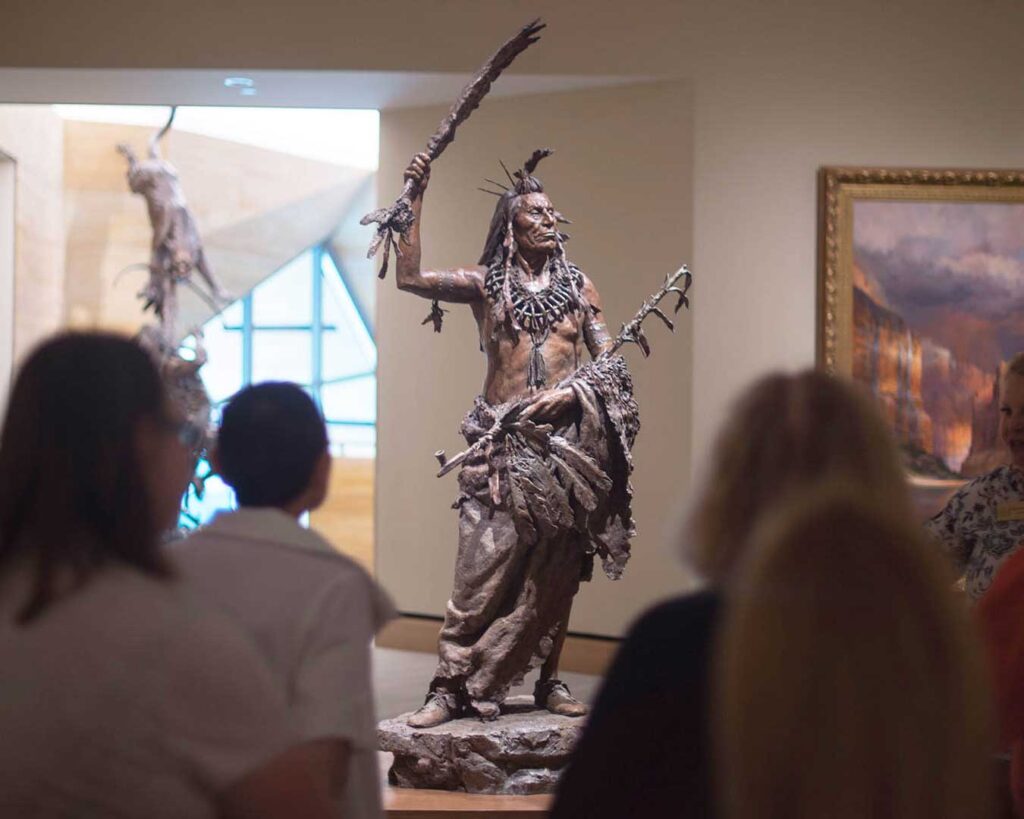
The Introductory gallery showcases majestic landscapes of the American West and some of the diverse peoples who have called these places home. Figurative bronze sculptures, inspired by paintings from 1830s westward expeditions, seemingly bring to life 19th century Native leaders. The large-scale paintings in a variety of styles introduce landscapes of the American West with depictions of colorful canyons, endless skies, and winding river valleys far from Florida. These settings help to “transport” visitors to the West as the museum experience begins. The land is the foundation for stories which define the history and mythology of the West.
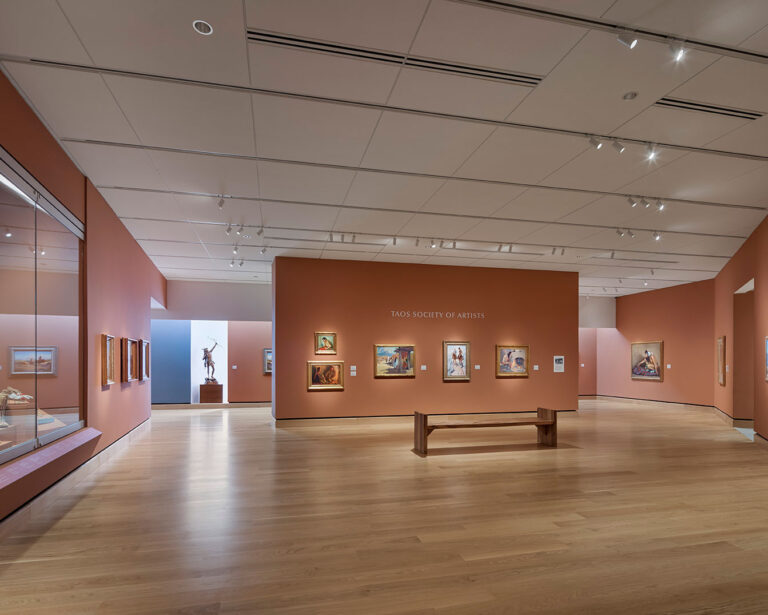
While the majority of the works of art in the James collection were created after 1980, the works in this gallery celebrate Western art from earlier generations. These paintings, most of which predate 1950, are the oldest in the collection. Painters Frederic Remington, Charles M. Russell and New Mexico’s Taos Society of Artists paved the way for today’s Western artists. Many of these artists were quite successful during their lifetimes due to the popularity of Western subjects with collectors back East and keen marketing efforts.
Some of these early artists were born in the western United States. Others sought adventure in the West, often on assignment as illustrators for publications that included Harper’s Weekly and McClure’s. In a variety of styles and approaches, they captured for future generations the vanishing Old West. They documented, influenced, imagined, and set the stage for artists who followed.
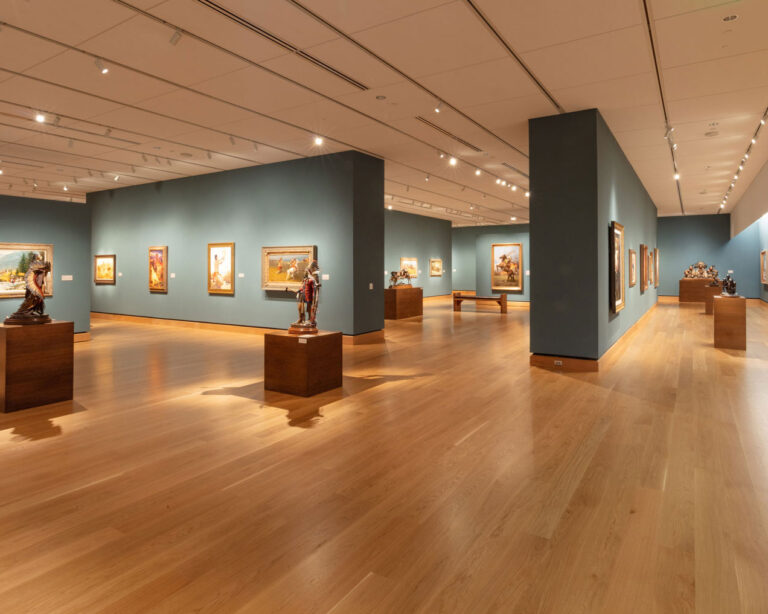
Many works of art in the James collection tell visual stories of American Indian life. The Native Life gallery features figurative scenes of community traditions and daily life from Plains, Southwest, Plateau, and Eastern Woodland tribes. Though the art was created in the last few decades by contemporary artists, their depictions tell stories of life from the late 1700s to early 1900s.
During this same timeframe, Native history also includes significant conflict and tragedy. As Anglo-American settlers pushed west, the U.S. government forced tribes onto much smaller reservations, irreversibly damaging culture and heritage. Though some works of art here reference conflicts, most of the art celebrates and attempts to preserve the pre-reservation tribal traditions. The artists in this gallery are not of Native heritage, but they incorporate historical research for accuracy and sensitivity in their interpretations of these diverse peoples.
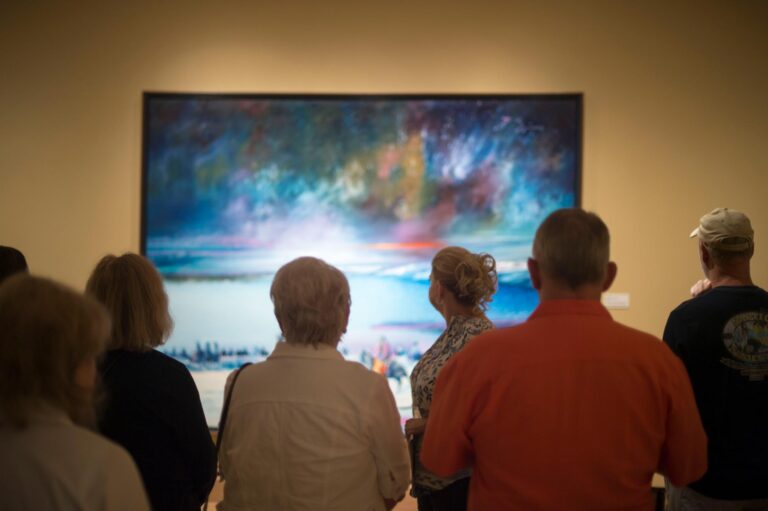
The Native Artists gallery features art by 20th-and 21st-century American Indian artists. Indigenous perspectives and cultural influences are prominent in much of these works, shown using a variety of styles and techniques. Ranging from realistic portraits to stylized landscapes, these contemporary interpretations use bold colors, symbols and statements. Since 1985, Tom and Mary James have collected art from contemporary Native American artists, meeting many at the annual Santa Fe Indian Market in New Mexico. Paintings and sculptures by artists from Plains, Southwest, Plateau, and Northwest tribes are included in the gallery.
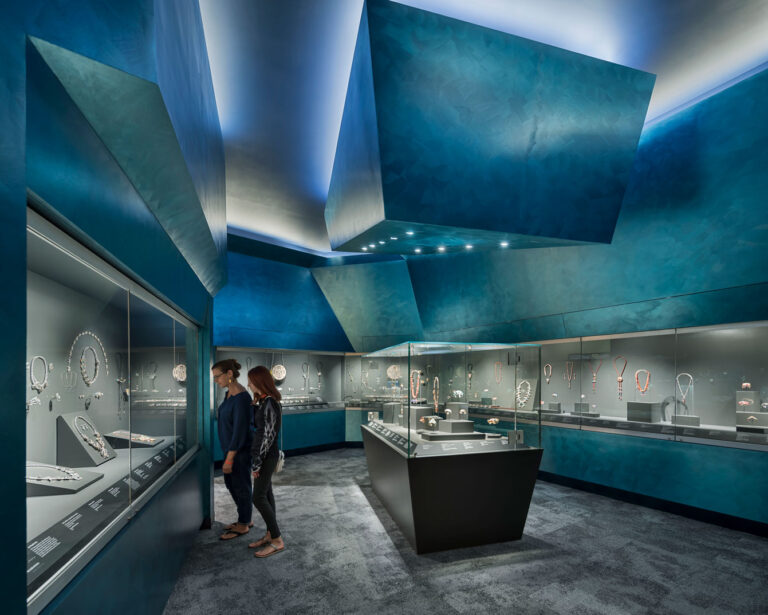
The Jewel Box gallery features premier examples of Native-made jewelry. The design of the Jewel Box was inspired by the interior of a geode, with sharp angles, rich color and low light. The finest craftsmanship and materials have been utilized by these jewelers to create statement pieces evoking deeply held beliefs and traditions of their cultures. Select early 20th-century vintage examples begin the story, with the crux of the collection created since 1980. Over the years, Tom and Mary James have personally worn many of the pieces on display.
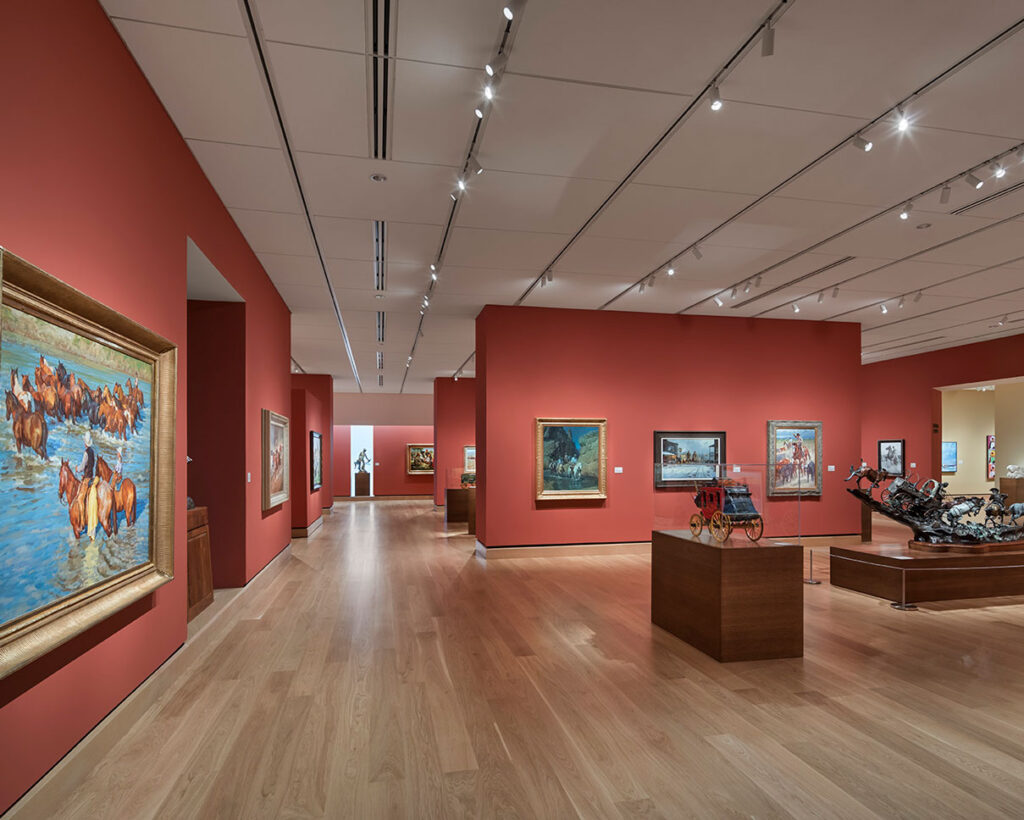
The Frontier gallery features a wide range of stories from the western frontier. In the early 19th century, as the East Coast became more heavily settled, government and land prospectors gradually pushed westward, again moving onto land that American Indians had called home for centuries. The paintings and sculptures here feature some of the people and landscapes of the time, including fur traders, buffalo soldiers, cowboys, and even some outlaws.
Cowboy life in particular is a major subject in this gallery. Known for its independent spirit and strong work ethic, cowboy culture reached its height in the 1870s and 1880s. Myths about them continued to grow for decades, and some still remain. For more than a century, cowboy life has been popularized through “Wild West” shows, pulp fiction, comic books, movies, television, and fine art. Today, painters and sculptors continue to play to and against stereotypes as they further our collective fascination with this American icon of the West.
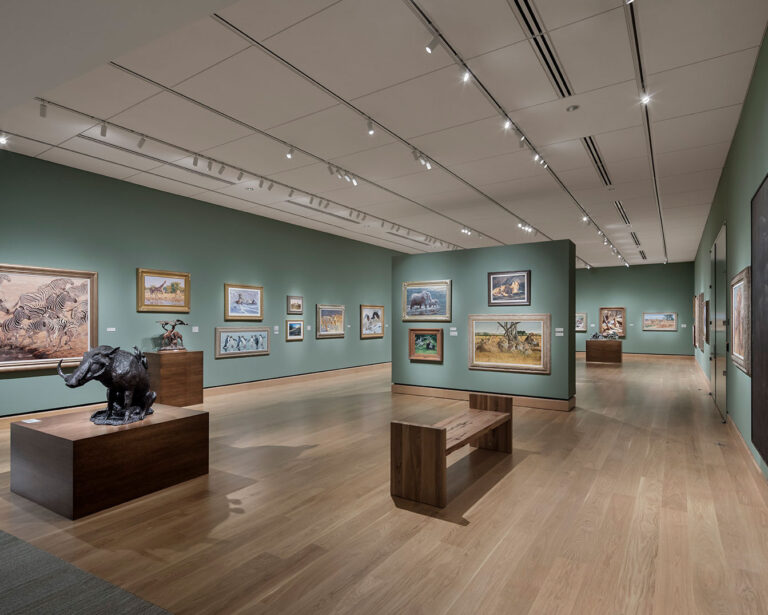
Animals in paintings and sculptures have long been fascinating subjects for both artists and art appreciators. In the 19th century, animal illustrators strived for accurate scientific documentation in their prints. Natural progression in methods of production and the development of photography gradually allowed for expansions in approach over the years.
Today’s contemporary wildlife artists remain concerned with accuracy and detail while also interpreting and expressing light, color and design in a variety of ways. Many artists are inspired by nature in their backyards, while others travel far and wide to experience exotic subjects up close. In all cases, there is no substitute for observation in the field. The artists represented here want to share their deep knowledge of animal behaviors and habitats and bring awareness to wildlife conservation issues around the globe.
The Wildlife gallery begins with animals native to North America, with habitats ranging from forests and plains to mountains and deserts. The visitor encounter expands later in the gallery to feature animals native to other continents. The selection of world wildlife art brings lions, elephants, panda bears and penguins all the way to Florida.
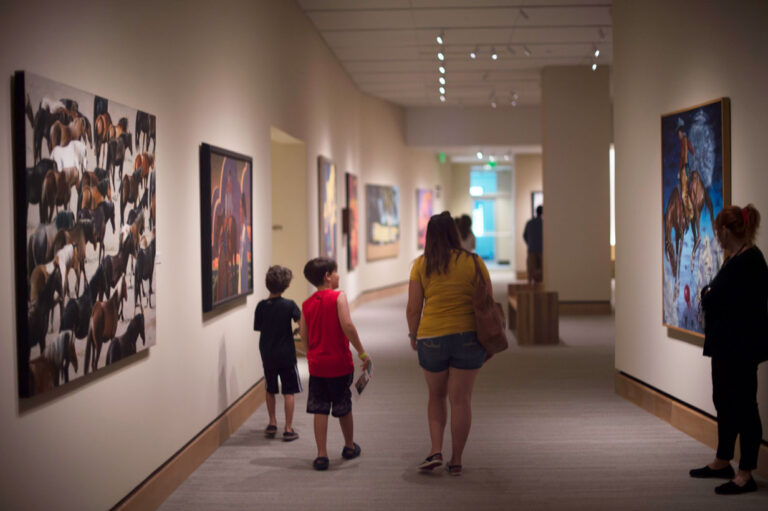
Western art is made in a variety of styles and media, distinguished as Western by its subject matter unlike other genres. Bucking broncos and portraits of Western icons are seen here in the New West gallery–but in unexpected ways. In addition to the history and allure of the West, these artists have been stylistically influenced by Pop Art, Cubism, Surrealism, and other art movements. Strong lines, bold colors, and large canvases create visual impact and fresh perspective to typical Western subjects. This art pushes the boundaries of the frontier, showing the independent spirits of the West in new ways.